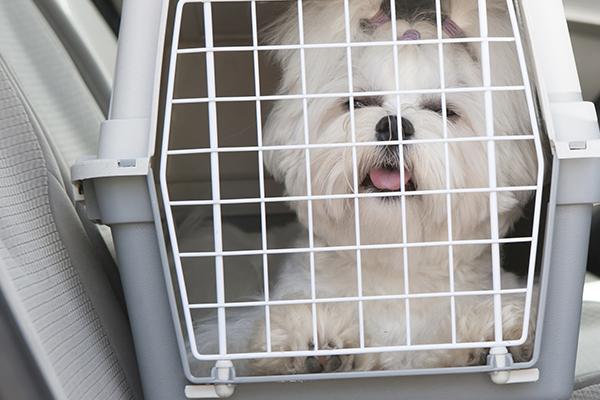Tourism and Pets - Pet Travel by Air

When traveling by plane with an animal, the best option is to take direct flights, without connections, and it is advisable to avoid sedating the animals so that they do not have any respiratory or other problems during the flight. If traveling in summer, it is best to take morning or evening flights to avoid high temperatures. In winter, on the other hand, it is best to fly at midday.
Domestic travel with your pet in Spain is quite straightforward. When booking the plane ticket, generally speaking, you must specify that you will be traveling with your pet, since airlines only allow a limited number of animals per flight. Make sure the airline has accepted your pet before buying the ticket. If you are traveling with more than one airline, you must check the regulations for each one. You must take the animal’s vaccination record as some airlines require a health certificate issued 10 days before the flight.
Depending on the size of your pet, and the policy of each airline, your pet will either be allowed to travel with you in the cabin or will have to go into the hold. It is important to check the airline’s policy beforehand to avoid any surprises. Regardless of where they travel, the animal must be transported in a suitable carrier which complies with the company’s size restrictions and rules.
The dimensions of the carrier must allow the animal to stand up without their ears touching the carrier roof, turn around and also lie down comfortably.
It is very important to check the carrier lock: it must have a metal door and a lock which will not open under any circumstances. If the latch of the door fails, this could cause it to open and the animal could end up running frightened through the airport or wandering around the hold of the plane. This could lead to the animal being lost or injured!
It is also advisable to put fasteners in place to ensure no strangers are able to open the door, check the absorption capacity of the floor and the ventilation of the carrier. It is advisable that the animal DOES NOT defecate or urinate in the carrier. To avoid this, it is recommended to take the animal for a long walk before traveling (in the case of dogs) and not to give them food in the five hours before take-off, as this could cause them to vomit during the journey.
The carrier must have an absorbent floor to prevent it from becoming wet, and must also be well ventilated, solid and sturdy.
Ventilation of the carrier is very important as, without proper air circulation, the animal could suffer temperature fluctuations or a heat stroke due to lack of oxygen. The hold of the aircraft is pressurized like the passenger cabin, so the air and temperature in these compartments are usually controlled. You should note that dogs and cats cannot fly together in the hold.
You must also make sure the front of the carrier (the grille) is not wide enough for your pet to stick their head out. This could be dangerous for them and for those handling the cage during loading and unloading.
For dogs weighing 15 kg and over, the water dishes which are sold with the carrier are not the most suitable as they are too small, particularly for long or international trips. A Tupperware dish or even a plant pot without holes can be used as a large dish for a dog weighing 15 to 30/45 kg. Remember that water bottles cannot be used in many cases, as adult dogs only know how to drink rather than suck. On international trips, dogs traveling with bottles requiring them to suck often arrive dehydrated.
Remember to put on their mandatory identification labels. Generally speaking, the carrier must have a double label: the first must contain the words “live animals” and arrows indicating the upward position; the second must have the owner’s contact information, address and contact telephone number for the accommodation at the destination.
Most animals are anxious and nervous the first time they have to go in a carrier or are in an unfamiliar environment. It is therefore important to get them used to this in advance. Before the trip, have the carrier at home with the door open, with a blanket, food and water inside. This will allow the animal to understand that it is a safe place.
In order to have a calm trip, the animal must feel comfortable in their space. To help with this, you can put a used, unwashed item of clothing in the carrier, so that the familiar smell will help the animal relax. Furthermore, if family members are nervous, it is likely that the animal will notice and will become even more agitated. It is therefore important to act normal and not make it a distressing goodbye.
It is important to check all the details by contacting the chosen airline. For example, Iberia flights allow animals to travel in the hold or in the cabin, depending on their weight. However, since 2016, it no longer allows brachycephalic breeds of animals (e.g. English bulldog, French bulldog, boxer, pug, pit bull) to travel in the hold. Vueling, on the other hand, does not allow rodents to travel and dogs are not allowed to travel in the hold. AirFrance, depending on the destination and the type of aircraft, does not always allow travel with animals on board; Ryanair does not transport any animals at all on any of its flights; other companies have special animal fleets, etc. As we mentioned, you must always compare and clarify the conditions with the airlines before booking your ticket.
